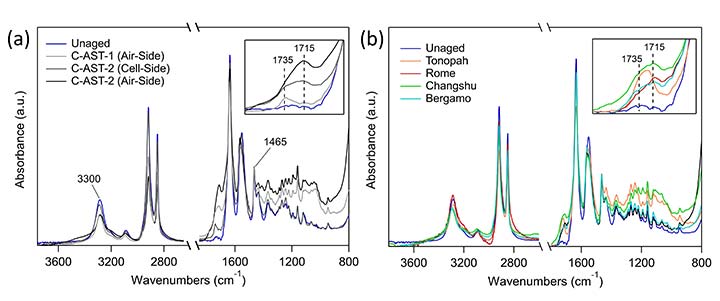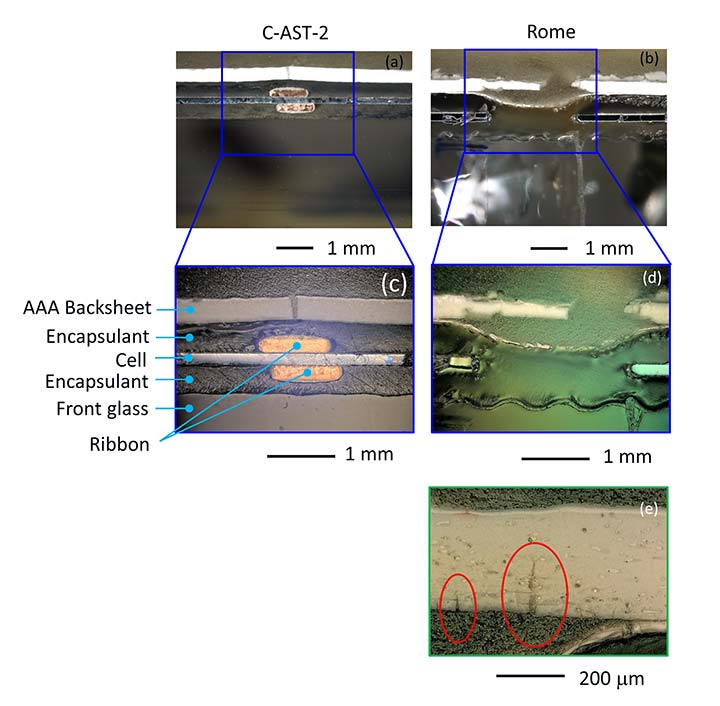Correlation of Advanced Accelerated Stress-Testing Procedures with Field Data through Advanced Characterization and Data Analytics
DuraMAT will leverage state-of-the-art, accelerated stress testing (AST), materials characterization, simulation, and data analytics to drive the establishment of best practices and validation of AST protocols for the photovoltaic (PV) industry.
We will specifically investigate the correlation between different AST testing protocols and fielded modules by characterizing changes in the backsheet material properties.
Core Objective
Disruptive Acceleration Science
Location
National Renewable Energy Laboratory, SLAC, Sandia National Laboratories, and Lawrence Berkeley National Laboratory
Applications
The approach developed by this work can be applied to additional materials systems, providing a new capability for DuraMAT stakeholders to use for discovering, de-risking, and enabling the commercialization of new materials and designs.
Availability
This capability is available to national labs, universities, research institutions, and industry.
References
Owen-Bellini et al “Combined-Accelerated Stress Testing for Advanced Reliability Assessment of Photovoltaic Modules” 35th EUPVSEC, 2018
Owen-Bellini et al “Correlation of Advanced Accelerated Stress Testing with Polyamide-based Photovoltaic Backsheet Field-failure” 46th IEEE PVSC, 2019
Meert et al, “Computational Modeling of Photovoltaic Mini-Modules Undergoing Accelerated Stress Testing”, 47th IEEE PVSC, 2020
Schelhas et al, “Towards Validation of Advanced Accelerated Stress Testing Protocols through Failure Analysis and Materials Characterization”, 47th IEEE PVSC, 2020
Owen-Bellini et al, “An Overview of Backsheet Materials for Photovoltaic Modules,” DuraMAT Webinar, May 2020
Contact
To learn more about this project, contact Michael Owen-Bellini.

Figure 1. FTIR-ATR spectra for (a) an unaged AAA sample and cell-side and air-side AAA samples aged in C-AST and (b) field-aged AAA samples measured from the air-side. It is shown that the chemical degradation occurring on the outer layers in C-AST are representative of those occurring in the field.

Figure 2. (a) cross-sectional photograph of the C-AST aged module section featuring a macrocrack in the AAA backsheet located over the cell ribbon, (b) cross-sectional photograph of a AAA sample extracted from a module deployed in Rome, Italy. Cross-sectional micrographs include: (c) the C-AST sample featuring a macrocrack at a cell ribbon, (d) the Rome sample featuring a macrocrack at the space between two cells, and (e) the Rome sample featuring two macrocracks in the core layer (also at the space between two cells).